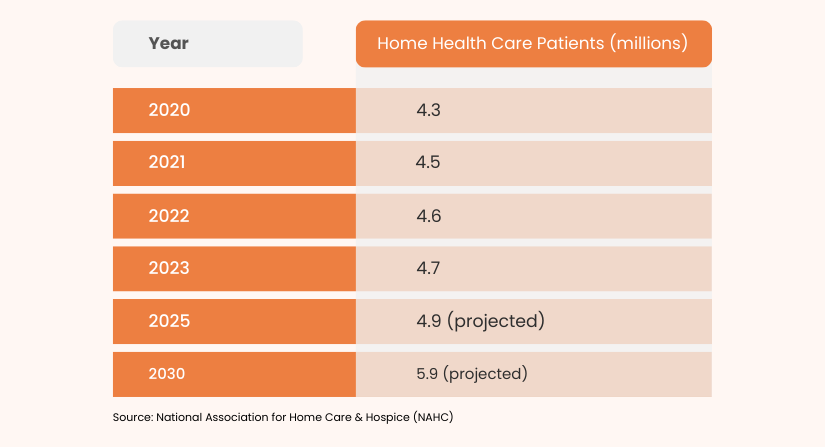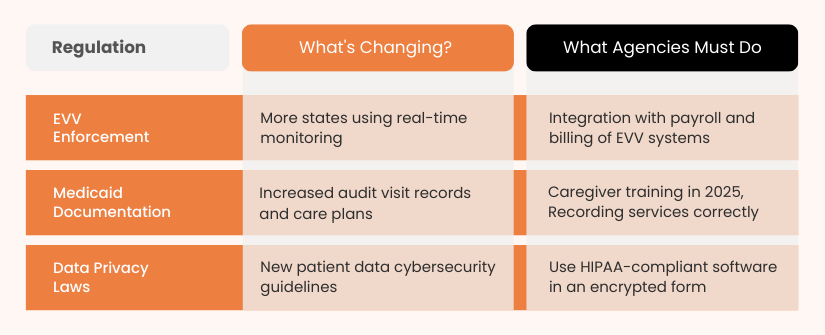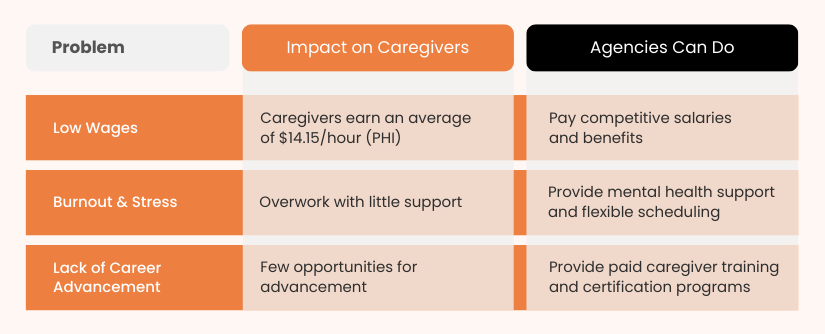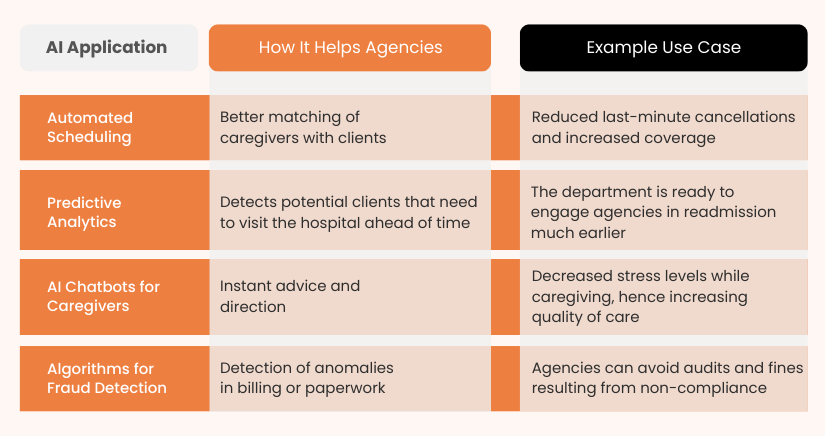
The home care industry is at a crossroads. Key caregiving trends for 2025 indicate that aging populations, caregiver shortages, changes in regulation, and the advent of AI technology are changing how agencies operate their business. New rules and regulations are presented to the providers, higher operational costs, and ways caregivers are becoming more competitive within the job market.
And demand for home care is growing exponentially.
On the other hand, a chronic shortage of caregivers is acute, and value-based care models are driving agencies away from fee-for-service reimbursement. So, what should home care agencies focus on in 2025 to be competitive and compliant? To give you an overall idea of these caregiving trends for 2025, today we are breaking down the most important trends shaping home care, what this means for providers, and how agencies can respond proactively.
Over the last decade, the home care sector has made significant strides due to the aging population and interest in home-based care. The National Association for Home Care & Hospice reports that nearly 10,000 Americans turn 65 daily, a trend that is estimated to continue for the next two decades. Statistics from 2023 indicate that almost 4.7 million people received home health care, with an estimated 25% growth by 2030.

Working in one of the most regulated areas of health care, home care agencies can fully expect the bar to be raised further on compliance, particularly across the following areas:
Why Is Compliance More Crucial in 2025?
Regulators are tightening the chains around payment, fraud, and errors in care documentation. Medicaid payments for personal home care services increased to $4.7 billion in 2022, according to the Office of Inspector General (OIG). Due to these and other charges, state and federal agencies are conducting increasing audits and penalties for non-compliance.
Major Compliance Updates for 2025:

What If Agencies Fail to Comply?
Agencies must find ways to anticipate changing compliance requirements, proactively ensure updated policies, and use technology to engage staff.
The most significant challenge for home care agencies in caregiving trends in 2025 is a shortage of caregivers to care for patients at home. According to PHI, the industry needs an additional 1.2 million direct care workers by 2030, but most agencies’ turnover rates remain over 60%.
Leading Contributors to High Turnover :

How Agencies Can Retain Caregivers:
Technology is revolutionizing home care delivery. By 2025, AI solutions will aid agencies in automating paperwork, streamlining scheduling, and enhancing compliance monitoring.
How AI Is Revolutionizing Home Care
2025 predictions for caregiving highlight that 84% of health executives believe AI will change care delivery (Accenture).

Reimbursement models are changing. By 2025, fee-for-service is being replaced by value-based care (VBC), where payments are based on health outcomes rather than the volume of service.
Early adopters of value-based care will likely gain more contracts and higher revenues.
As we enter 2025, the Future of Caregiving is transforming due to an aging population and increased demand for personalized services. Technology, such as telehealth, is a must, as it increases accessibility and reduces hospital readmission rates by 25% (Source: American Hospital Association).
Therefore, the home care sector can shine by focusing on Key Caregiving Trends 2025, investing in technology and staff, and adopting new trends. Today is the perfect time for agencies to innovate and commit to a future where clients and caregivers will be supported by the best there is.
Related Blogs:
How Medicare’s 2025 Initiatives Will Shape Caregiver Training
Shaping the Future of Caregiving: Key Trends and Innovations
Contact us to inquire about our state-wise training courses and take the first step towards upskilling your team with a 14-day free trial!